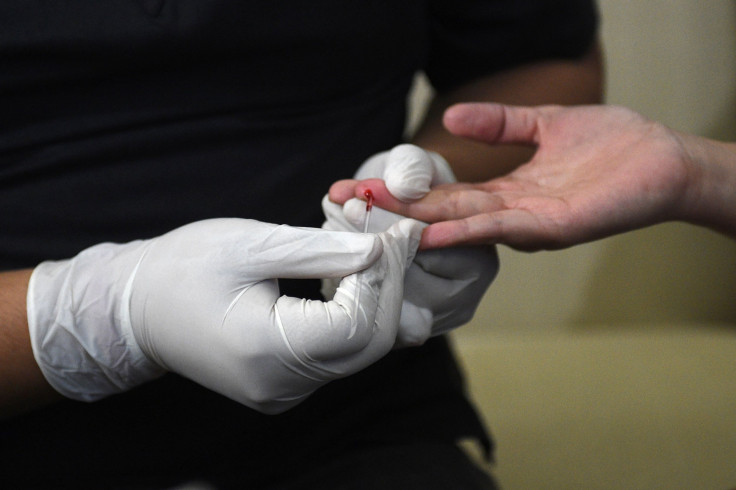HIV-Infected Cell Sexually Transmits Into New Host, Video Shows

A new video released by researchers shows the moment an HIV-infected cell transmits the virus into a new host during intercourse. The video shows the entire process of the virus crossing genital mucus membranes to reach its targets in the immune system.
"We had this global idea of how HIV infects this tissue [of the genital tract]; but following something live is completely different," Morgane Bomsel, a molecular biologist at the Institut Cochin in Paris and a senior author of the study, said in a statement. "The precise sequence of events can be defined."
To better understand the process, researchers created an in vitro model of urethral mucosa. In the video, the virus, which infects cells of the immune system — called a T cell, is labeled with a green fluorescent protein. The video shows the T cell coming into contact with epithelial cells of the reconstructed urethral mucosal tissue. Once these cells are in contact, a kind of pocket forms, called a virological synapse, allowing viral particles to travel from the infected cell to the uninfected cell.
Bomsel said it was interesting to note that the infected T cells seemed to target epithelial cells directly above macrophages.
"The macrophage just stays still, ready to get the virus when it escapes the epithelial cells. But this dynamic observation allowed us to realize that the synapse is always formed on epithelial cells that are just above macrophages, suggesting we do have an interaction between the macrophages and the epithelium. We couldn't have imagined that before this kind of imaging," she said.
After about 20 days, HIV entered a latent or "dormant" stage, but the virus was present inside the macrophages. The presence of the virus inside the macrophages challenges efforts to develop treatments for HIV.
"Once HIV is installed into a reservoir, it makes life very complicated if you want to eradicate the virus," Bomsel said, adding that antiretroviral therapies can help during such a case, but stopping the therapy would result in the virus rebounding and continuing to spread.
"So an aim would be to act extremely early upon infection to avoid this reservoir formation, which is why I think a vaccine active at the mucosa is what you would need. Because you can't wait," she added.
"We are trying to find ways to purge the reservoir, because we think we know how to kill the virus once we shock the reservoir. And another part of what we do here is work to develop a mucosal HIV vaccine," Bomsel concluded. "It's a complicated field, but I think it's important."
These findings were described in a study published Tuesday in the journal Cell Reports.
Over 36 million people in the world suffer from HIV, including 2 million children. There is currently no cure for HIV.
© Copyright IBTimes 2024. All rights reserved.





















